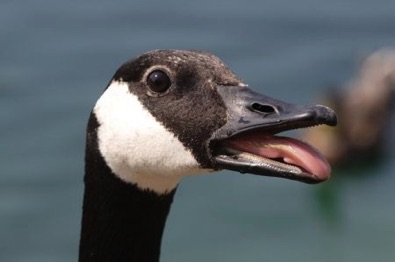Fish & Wildlife




Currently we have about 40-60 geese that call Philbrook home for the summer. Normally what goes into a goose generally comes from within the watershed and what comes out also stays in the watershed (at least for resident Giant Canada geese). The problem comes in when visitors bring in additional feed, yes even old bread.
Goose poop contains a significant amount of nitrogen and phosphorus, both fertilizers. The average Canada goose can poop as many as 92 times a day and each dropping contains 76 % carbon, 4.4 % nitrogen, and 1.3 % phosphorus. A well fed Canada Geese can produce up to 1.5 pounds of poop a day, and those droppings can contain harmful bacteria such as E. Coli, Giardia, Salmonella and Chlamydiosis.
The problem at Philbrook is abnormal algae growth in the channel (shown) from geese getting fed around the lake, but returning to the channel for security - and to poop. You can view feeding the geese just like going up and dumping fertilizer into the channel. Fortunately, Philbrook itself is a reservoir and refreshes itself every year. However, water (and the things in it) does flow downstream, and the channel is a primary location for fish reproductive activity.
Don't feed the geese!
Don't fish with live bait!
Over the years Philbrook has tended to have a good record of mainly having trout for fish. There have been infestations of catfish that have caused the lake to be drawn down and poisoned to remove this non-native species. Probably a few catfish were brought back down from one of the High Lakes, and then tossed in the lake. They reproduce like wildfire and survive the winters. Also, in the last couple years we have seen bait fish swimming around the shores. They may or may not survive, but they do eat young trout and decrease the fishing potential of the lake. The feeder streams and lake includes Browns, Brooks and Rainbow trout. Cal DFG has historically stocked the Lake with trout, although that action has been limited or curtailed in recent years.
Other daily observations have documented numerous wildlife within a larger area including various raptors (bald eagles, owls, osprey, and occasionally a golden eagle), black bear, river otter (who also love trout), mountain lion, bobcat, and coyote. And of course don't forget OR-7, the wandering wolf.

